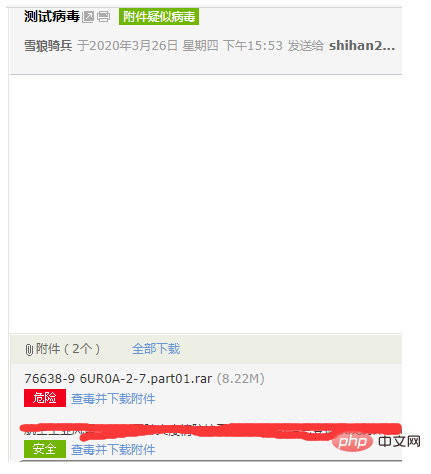Home >Backend Development >PHP Tutorial >PHP implementation logic for detecting whether files have viruses
After the user receives the sent file, he must be able to detect whether the file is a virus. The core software is clamav, which can be executed on the Linux command line to detect viruses in files or directories
Recommended : PHP video tutorial
For downloading and installation, please refer to other technical articles.
It should be noted that you need to enable
LocalSocket /tmp/clamd.socket
in the configuration file
When running, a clamd program is run as a daemon. When detecting, you only need to Call the following command
/usr/local/clamav-0.102.1/bin/clamdscan File
The response information is the following content
/usr/local/clamav-0.102.1/bin/clamdscan /tmp/attachment_04613DE5A94DD00E1F48F7A5D39A802C9700000000000001_4 /tmp/attachment_04613DE5A94DD00E1F48F7A5D39A802C9700000000000001_4: Xls.Virus.Mailcab-6702020-0 FOUND ----------- SCAN SUMMARY ----------- Infected files: 1 Time: 0.176 sec (0 m 0 s)
Call the exec function in PHP and call the above command to achieve detection
$cmd="/usr/local/clamav-0.102.1/bin/clamdscan {$file}";
exec($cmd,$output);
The above is the detailed content of PHP implementation logic for detecting whether files have viruses. For more information, please follow other related articles on the PHP Chinese website!